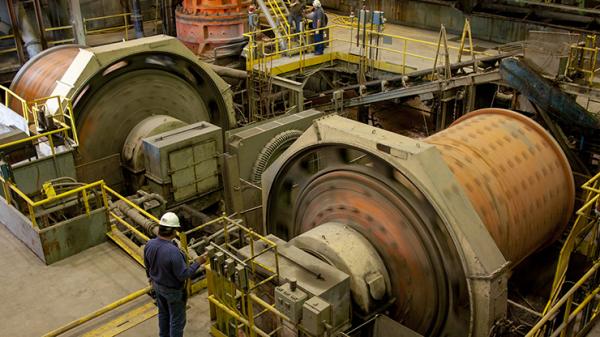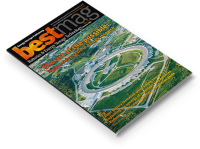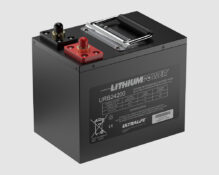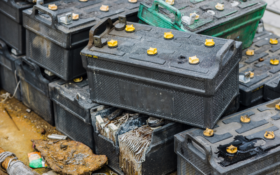Lead battery recycling firm Doe Run Co. has been fined $1.2 million by Missouri regulators for ‘dozens’ of clean air violations over several years at its center in southeast Missouri.
The fine by Missouri Department of Natural Resources (MDNR) cites emissions at the Buick Resource Recycling Facility and claims the facility had emitted excess lead into the air over ‘several’ years.
The order allows Doe Run four years to attain compliance and includes corrective action milestones including a technology decision by the end of this month; a plant-wide ventilation study due by next January; and permit amendment applications due at the end of February and March of 2020.
The order alleges Doe Run officials failed to adequately conduct performance tests and communicate with regulators, a charge Steve Batts, vice president operations and chief operating officer at Doe Run, denies.
He told BEST: “There’s no question we missed the target with certain regulations, and for that we are both sorry and committed to addressing the remaining issues.
“But the question is: is the public at risk? No. We have been meeting our lead emissions requirements (NAAQS) at our fence line for the past 37 months.”
He added in a statement: “Many of the issues identified by MDNR have already been addressed. This agreement puts these past issues behind us and provides a path and schedule to make additional investments to address remaining issues. We are confident that the investments being made will allow us to meet our obligations for many years to come.
The company plans to continue to operate throughout the process and has no expectations of interrupting production.
Raised blood levels in three postcodes: Doe Run answers BEST‘s questions on their environmental concerns.
The air quality fine comes little more than 18 months since the company was ordered to clean properties in eastern Missouri after children were found to have blood levels above 5 micrograms per decilitre, according to the U.S. Environmental Protection Agency (EPA).
The total cost of the clean up was estimated at $111 million, although a Doe Run spokesman told BEST the company believed that amount to be an overestimation. The company is responsible for 60% of the incurred costs.
The company worked with Soil and Land Services, to test soils at residential properties identified by the EPA to determine those properties, or portions of properties that met EPA established soil replacement or remediation criteria.
BEST: Doe Run was ordered to clean more than 4,000 properties in eastern Missouri, why was this?
Doe Run: The clean-up activities in St Francois County are related to historic operations by a predecessor company. The last lead mining operations in that area closed nearly 50 years ago.
The age of the housing in this area indicates that these homes would likely have had lead paint.
According to the Missouri Department of Health and Senior Services (MDHSS) as quoted in their annual Missouri Childhood Lead Poisoning Prevention Program 2018 Report “The primary lead hazard to children in Missouri is deteriorated lead-based paint.” http://health.mo.gov/living/environment/lead/index.php
Despite this, we started clean-up about a year ago and have up to 12 years to complete the work.
BEST: According to the U.S. Environmental Protection Agency (EPA) 9-17% of children were found to have blood levels above five micrograms per decilitre because of lead contamination surrounding your site. Can you explain this?
Doe Run: The information shared in EPA’s press release was inaccurate for a number of reasons. Below is an excerpt of a letter sent to the EPA by Doe Run in 2018 about the misrepresentation:
“First, EPA’s statement that between 9.3% and 16.7% of children in the Big River Mines Tailing Site have a BLL above five micrograms per decilitre is an inaccurate characterisation of the data. The percentage recited is not the actual percentage of all children in the study area with elevated BLLs, it is merely the percentage of children tested who display an elevated BLL. Because, as the CDC (Centers for Disease Control and Prevention) made clear, the program tests only those children most at risk for elevated BLLs, it stands to reason that a higher percentage of those children would exhibit elevated BLLs than the population at large.
“Perhaps more importantly, the data are skewed by extremely small sample sizes as is the case with Zip Code 63653, the zip code cited as having 16.7% of children above the reference level. There are more than 100 children under the age of six who reside in zip code 63653. Based on conversations with Mr. Garoutte (Missouri Department of Health and Senior Services) and a review of historical data, of those 100 plus children, only 12 particularly at risk children were tested. Of those, two tested as having elevated BLLs. One cannot extrapolate the results from a small, non-random atypical sample to an entire population. It is this type of reporting that causes unwarranted concerns in these communities and is, frankly, irresponsible.
“Moreover, even if such a small sample size was indicative of the actual percentage of children with elevated BLLs, more than 85% of the residential properties in this zip code were built before 1978 and, as stated on EPA’s website, are likely to contain lead paint. In fact, 57.6% of the residences were built before 1940 and are, therefore, even more likely to contain lead paint.
“Finally, the Big River Mine Tailings Site was characterized as anywhere in St. Francois County where lead has come to be located (an area encompassing approximately 452 square miles). St. Francis County contains part or all of thirteen zip codes.
“Inexplicably, EPA did not include statistics for the largest zip code in St. Francois County, both by area and population, 63640. How is it possible that the press release could, on one hand, purport to reflect the BLLs for children in the “three zip codes comprising the majority of the Big River Mines Tailings Site” and, on the other hand, omit statistics for the largest of the zip codes in question while including statistics for just two zip codes, including one of the smallest, 63653?
“Had EPA actually included the BLLs for the three zip codes comprising the majority of the Big River Mines Tailings Site (63601, 63628 and 63640), the press release would have read, “between 5 and 9.3 percent of those children tested have an elevated BLL above 5 micrograms per decilitre.”
“The numbers found in these communities in St. Francois County are not out of line with other communities where lead-based paint is prevalent.” (End of excerpt.)”
We immediately pointed out to EPA that they had misrepresented the data and asked that they correct their statements. They did not, and as a result this false information becomes a record. The public believe that because the EPA issued the press release it must be true, and that simply is not the case.
Furthermore if one reviews the MDHSS report and the raw data of confirmed cases you’ll find the largest segments of the population with elevated blood lead levels to be in the largest urban cities and their corresponding counties of St. Louis City, St. Louis County, Kansas City and Jackson County. No lead mining took place in these areas, rather these areas correspond with older homes and lead paint.
BEST: Have you any comment on the fact Doe Run has been hit with environmental concerns twice in less than two years?
Doe Run: In the case of the soil remediation, we are settling allegations that relate to historic mining practices of a predecessor company. We are also conducting yard sampling and clean-up in areas (zip code 63653) where more than 85% of the residential were built before 1978 and, as stated on EPA’s website, are likely to contain lead paint. Yet there is no acknowledgement that lead paint is the predominant cause in their press release.
In the case of this AOC, we stand by the statement that this covers several years of allegations all being settled at one time. We have either already addressed the issues in the document or have a schedule identified in the document as to when they will be addressed. We have more than three years (37 months) of complying with the lead NAAQS.
BEST: Could you also tell me what issues have been highlighted and what Doe Run has done to address them?
Doe Run: See above statement.












